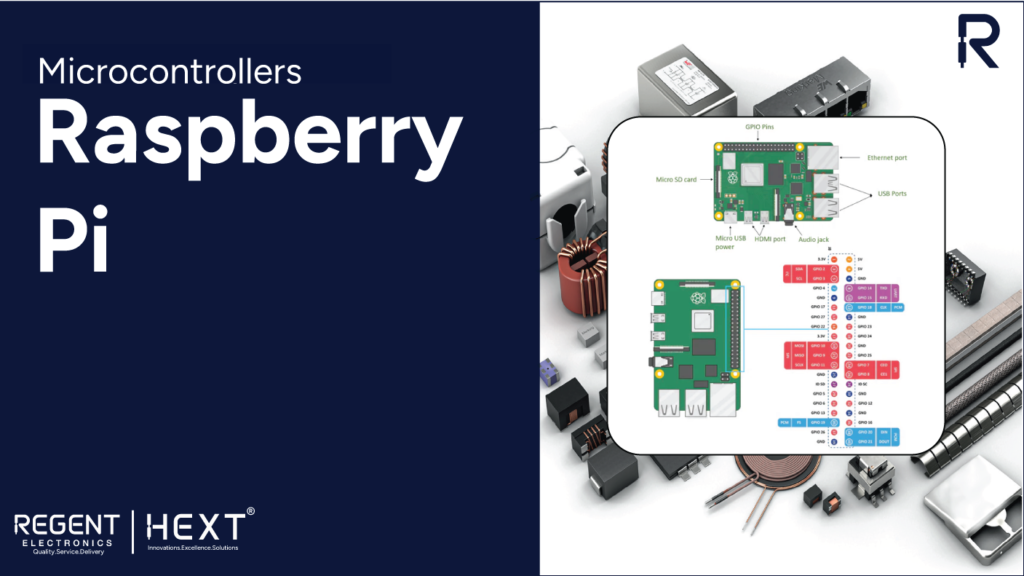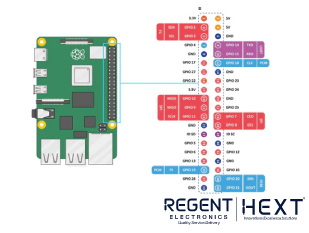
Introduction to Raspberry Pi: A Game-Changer in Computing
What is Raspberry Pi?
The Raspberry Pi is a compact and cost-effective single-board computer developed by the Raspberry Pi Foundation. Initially created to inspire learning and development in computer science, particularly in schools and developing nations, the Raspberry Pi has now become a global phenomenon, widely used in educational settings, DIY electronics projects, and more.
Key Features of Raspberry Pi
- Compact Design: The Raspberry Pi is about the size of a credit card, making it portable and easy to integrate into various tech projects.
- Affordable Price: Starting at just $35, the Raspberry Pi offers an accessible solution for both beginners and advanced users.
- Diverse Models: The Raspberry Pi comes in several versions like the Raspberry Pi 4, Raspberry Pi 3, Raspberry Pi Zero, each designed with varying performance and connectivity features to suit different needs.
- Versatile Operating System: Typically running on the Raspberry Pi OS (formerly Raspbian), it also supports other operating systems like Ubuntu and Windows IoT Core.
- GPIO Pins: Raspberry Pi features General Purpose Input/Output (GPIO) pins, ideal for connecting and controlling external devices for custom electronics projects.
- Connectivity Options: With multiple models offering USB ports, HDMI outputs, Wi-Fi, Bluetooth, Ethernet, and more, it’s a versatile platform for many applications.
- Enhanced Performance: The Pi’s performance evolves with each release, boasting faster processors, greater RAM capacities, and improved graphics over time.
The Evolution of Raspberry Pi: Milestones and Innovations
1. Early Development and Inception:
- 2006-2011: The Raspberry Pi’s development began with the goal of rekindling interest in computing among students. The first prototype was created, sparking excitement in the tech community.
2. Launch of the First Model:
- February 29, 2012: The Raspberry Pi Model B was launched, featuring a 700 MHz ARM11 processor, 256 MB of RAM, and two USB ports for just $35. The demand for this revolutionary device quickly soared.
3. Key Releases and Upgrades:

- 2013-2014: New models like the Raspberry Pi Model A and Model B+ introduced improvements in power consumption and GPIO functionality.
- 2015: The Raspberry Pi 2 brought a significant performance boost with its quad-core ARM Cortex-A7 CPU and 1 GB of RAM, while the Raspberry Pi Zero targeted budget-conscious hobbyists.
- 2016-2017: With the launch of Raspberry Pi 3, built-in Wi-Fi and Bluetooth capabilities made the device even more versatile.
- 2019-Present: The Raspberry Pi 4 Model B introduced an impressive upgrade with up to 8 GB RAM, faster USB 3.0 ports, and dual HDMI output.
Raspberry Pi Models Overview
Over the years, several versions of the Raspberry Pi have been released, including the Model A and Model B variants, offering users different configurations at varying price points. Here’s a quick overview:
- Raspberry Pi 1 (2012-2013): Model B, Model A
- Raspberry Pi 2 (2015): Model B
- Raspberry Pi 3 (2016-2018): Model B, Model B+
- Raspberry Pi 4 (2019-2020): Model A, Model B
- Raspberry Pi 400 (2021): Integrated in a keyboard for convenience
Key Components of Raspberry Pi 5: The Latest Innovation
The Raspberry Pi 5, the latest addition to the series, brings major performance improvements over its predecessors. Here’s a breakdown of its key components:

- Processor (CPU): Broadcom BCM2712 Quad-Core ARM Cortex-A76 offers a substantial increase in performance compared to previous models.
- Graphics (GPU): The VideoCore VII GPU supports high-resolution outputs and is ideal for multimedia applications.
- Memory (RAM): Available in 4GB, 8GB, and 16GB LPDDR4 configurations, this enhanced memory capacity is suitable for a wide range of applications.
- Connectivity: Wi-Fi 6 and Bluetooth 5.0 ensure better wireless performance, while Gigabit Ethernet provides a stable internet connection.
- USB Ports and Storage: Two USB 3.0 ports for high-speed peripherals and a microSD card slot for flexible storage solutions.
- Power Supply: The Raspberry Pi 5 features a USB-C power input for reliable power delivery, accommodating the system’s higher energy demands.
- GPIO Pins: The 40-pin GPIO header remains an essential feature, enabling users to interface the board with external hardware components.
The Future of Raspberry Pi: A Platform for Innovation
As the Raspberry Pi continues to evolve, it remains a cornerstone in the DIY electronics community, education sector, and even industries like AI, IoT, and industrial automation. New releases are focused on improving accessibility, performance, and expanding its use across different fields, ensuring the Raspberry Pi remains a pivotal tool for makers and professionals alike.
Why Choose Raspberry Pi for Your Projects?
Whether you’re an educator, hobbyist, or industry professional, the Raspberry Pi provides an affordable and versatile computing solution. With its growing range of models, GPIO capabilities, and extensive community support, Raspberry Pi is the ideal platform for innovation.
Conclusion: Revolutionizing Computing with Raspberry Pi
From its humble beginnings to becoming a global tech sensation, Raspberry Pi has truly revolutionized affordable computing. It empowers millions of users worldwide to create, learn, and innovate, and its impact will only continue to grow.
